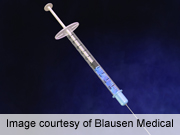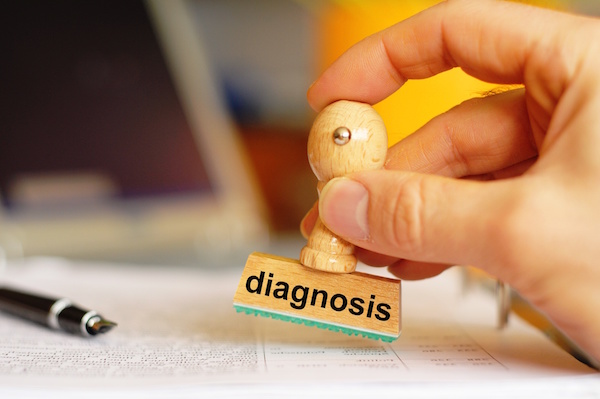
MONDAY, June 3 (HealthDay News) — Four out of five U.S. cancer doctors encountered shortages of essential drugs between March and September of 2012, which affected the quality of care they provided and increased treatment costs, new research shows.
The survey of 250 cancer doctors across the United States reveals a medical community grappling with ongoing shortages of needed medications, said lead author Dr. Keerthi Gogineni, a medical oncologist in the Abramson Cancer Center and the Perelman School of Medicine at the University of Pennsylvania in Philadelphia.
“These drug shortages are persistent and pervasive,” Gogineni said. “They are affecting the treatment of curable cancers, forcing physicians to improvise.”
About 94 percent of the doctors surveyed said the shortages had an impact on patients’ treatment, and 83 percent were unable to provide standard chemotherapy. About 13 percent reported that shortages interfered with clinical trials.
The findings were scheduled for presentation Monday at the annual meeting of the American Society of Clinical Oncology in Chicago.
American medicine has suffered significant drug shortages since 2006. President Barack Obama ordered the U.S. Food and Drug Administration in October 2011 to take corrective measures after prescription drug shortages hit an all-time high in the United States, with around 200 medications reported in limited supply.
The FDA now requires drug manufacturers to report impending shortages, and the agency has sped up its review of new manufacturing sites and suppliers.
Despite this, oncologists and hematologists still have trouble gaining access to medications needed to treat cancer patients. Shortages involving quality issues, manufacturing delays, capacity problems and a lack of raw materials still occur.
The drugs most commonly reported in shortage by survey participants were leucovorin, liposomal doxorubicin, 5-fluorouracil, bleomycin and cytarabine. These drugs are commonly used in the treatment of various forms of cancer, including gastrointestinal, blood, breast, ovarian and testicular cancers.
Cytarabine, which has been in use for four decades, is particularly critical for the treatment of leukemia. “That drug is the cornerstone of treatment for a common form of acute leukemia,” said Dr. Len Lichtenfeld, deputy chief medical officer for the American Cancer Society. “To not have that drug when you need it is clearly problematic.”
The survey found that cancer doctors have adapted to such shortages in different ways:
- 78 percent switched treatment regimens.
- 77 percent substituted alternate drugs part way through therapy.
- 43 percent delayed treatment.
- 37 percent had to choose which patients would receive the available medication.
- 29 percent omitted doses from a chemotherapy regimen.
- 20 percent reduced the required dosage.
“Clearly, it impacts the treatments patients receive,” Lichtenfeld said. “It takes a long time to develop an understanding of effective drug regimens. When you can’t use a proven effective drug and you have to go to an alternative plan, you certainly become concerned about the effect of that switch on the health of your patient.”
These shortages also have driven up the cost of care, Gogineni added. Doctors unable to use well-known generic cancer drugs have had to substitute more expensive brand-name medications for patients in need. Oncologists surveyed said they substituted more expensive branded drugs 60 percent of the time when confronted with shortages in the generic medications 5-fluorouracil, leucovorin and paclitaxel.
For example, the cost of one round of colon cancer treatment using 5-fluorouracil is about $28, Gogineni said. Almost one-quarter of the doctors surveyed said they had to resort to a brand-name alternative, capecitabine, which costs $3,900 for one round of treatment.
“The shortages that we see in cancer drugs are in the cheaper generic agents,” she said. “It’s rare for a branded agent to be in shortage.”
More than two-thirds of care providers surveyed said they had no institutional guidelines or committee to help make difficult decisions regarding treatment modification.
Gogineni said she would like to see organizations such as the American Society of Clinical Oncology begin issuing “best practice” guidelines to help doctors best deal with known or anticipated drug shortages.
“When we know there’s a drug that’s going to be in shortage, it would be relatively straightforward for us to issue guidelines for what’s the next best practice,” she said.
A separate study conducted by the society and also presented at the annual meeting echoes Gogineni’s survey findings. The ASCO survey found that nearly 60 percent of physicians surveyed were aware of ongoing drug shortages in the community. More than 40 percent said the shortages have not been resolved.
Lichtenfeld said he hopes the findings will renew public attention regarding this ongoing issue.
“We had substantial interest in this topic a while ago, starting in 2011, but you don’t hear as much about it today as you did then,” he said. “The problem remains very real, and this study might refocus our attention on what remains a serious issue for cancer patients and those who care for them.”
Data and conclusions presented at meetings should be considered preliminary until published in a peer-reviewed medical journal.
More information
The American Cancer Society has a guide to cancer drugs.

